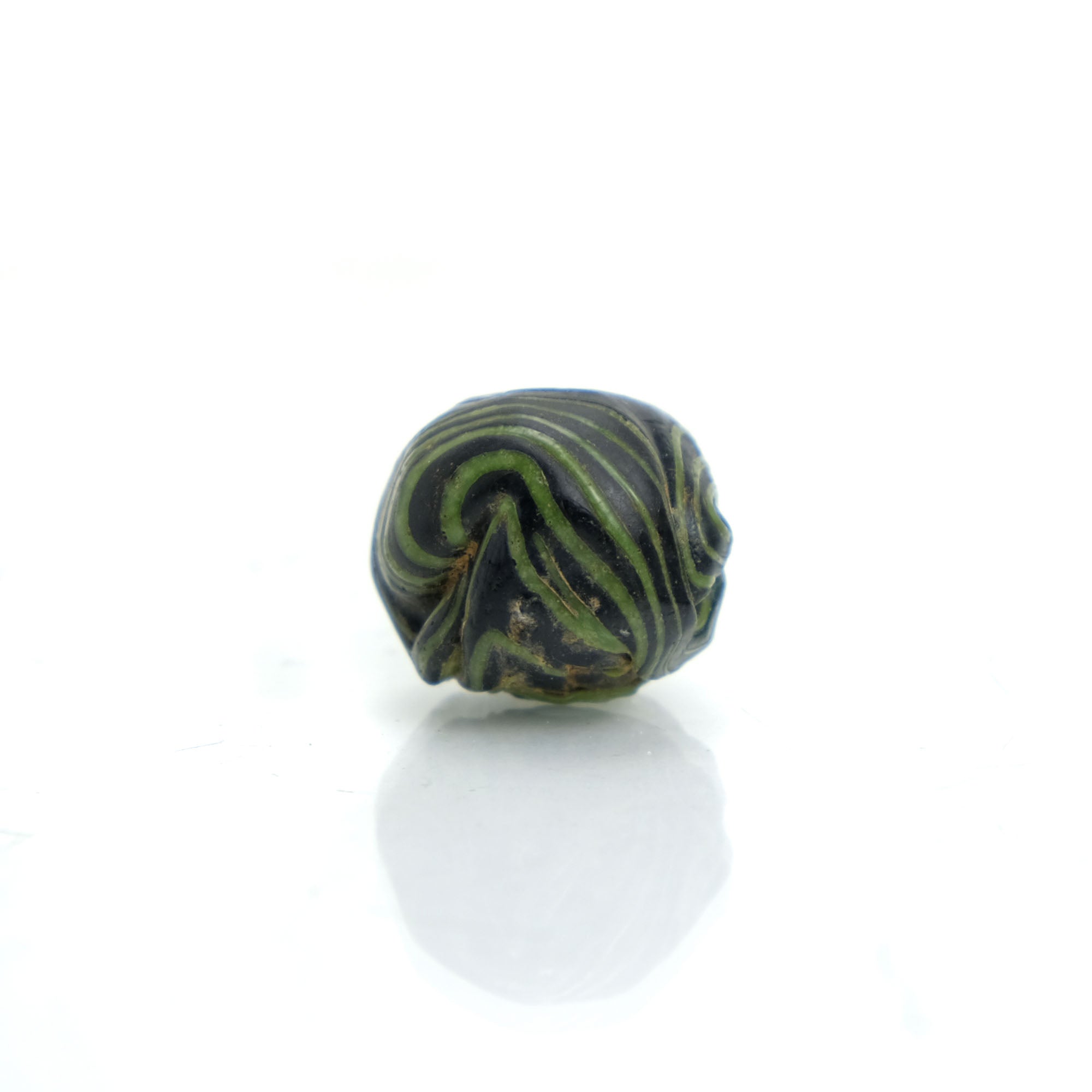Islamic Glass Trade ca.16th-19th Century Bead #11
- Islamic Glass Trade ca.16th-19th Century Bead #11
- Measures approx. 22mm x 20mm
- Material: Beautifully hand wound and folded glass creating an almost “textile/ fallen robe” effect.
- The trade of glass beads has long been assumed to have been under Islamic dominance during the early centuries following the Arab conquest of the Middle East, judged by the prevalence of Islamic beads in the archaeological contexts from Viking Scandinavia to medieval Morocco.
- This is the ‘Golden Age’ of Islamic glassmaking, despite the fractious nature of the Islamic World of that time. The glass-producing regions of Syria and Egypt continued their industries. It is for the materials excavated and produced at sites such as Samsat in southern Turkey, Aleppo and Damascus in Syria, Hebron in the Levant, and Cairo that this period is referred to as the ‘Golden Age’ of Islamic glass.
- The Middle Islamic Period is characterized by the perfection of various polychrome decorative traditions, the most important of which are marvering, enamelling, and gilding.
- Marvering involves applying a continuous trail of opaque glass (in various colors such as white, red, yellow, or pale blue) around the body of a glass object. This trail may then be manipulated by pulling it, creating a characteristic ‘wavy’ pattern. The object was then rolled on a marver (a stone or iron slab) to work the trail into the glass vessel itself.
- Origin is Persia via Egypt













